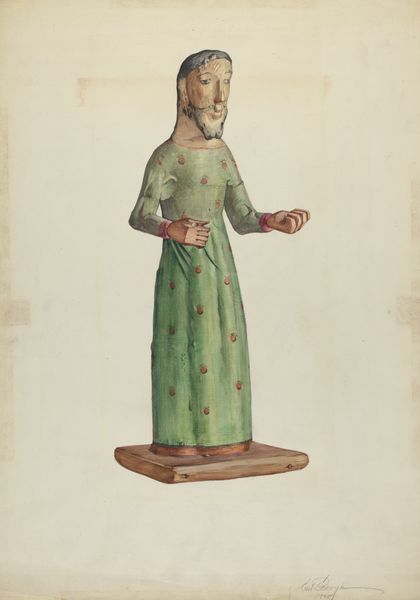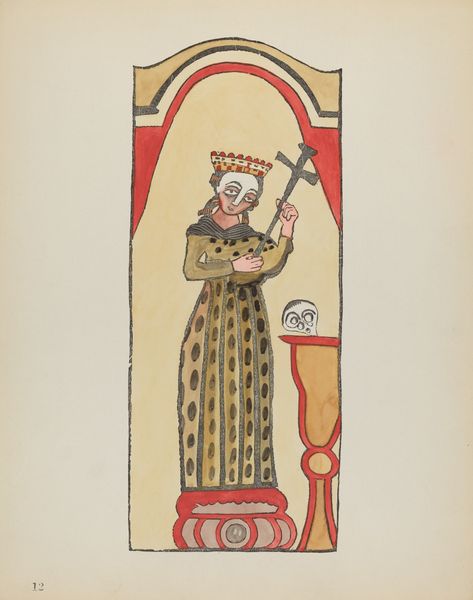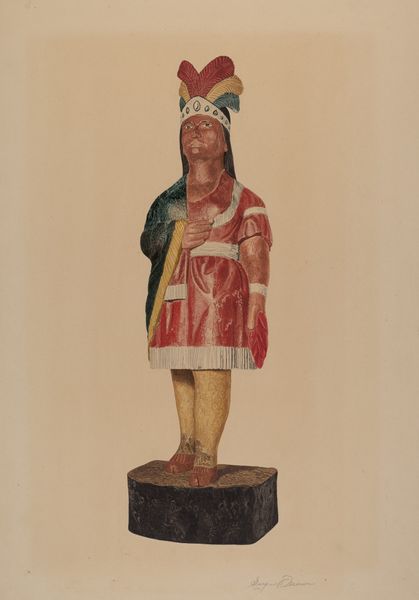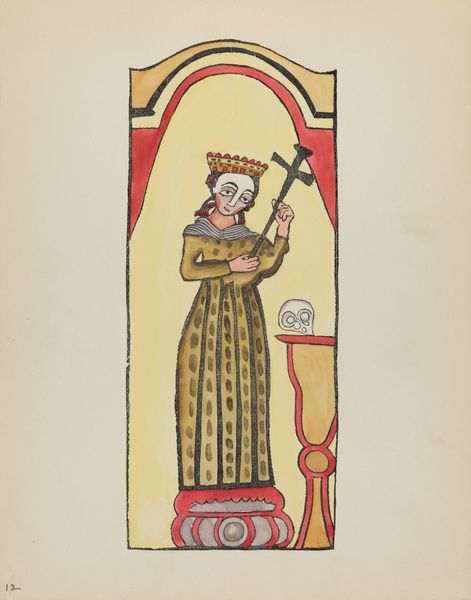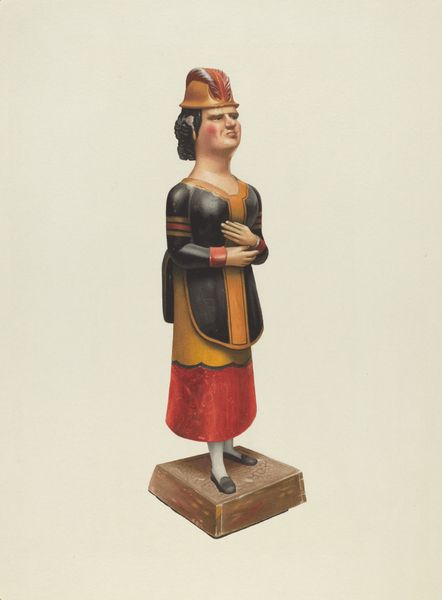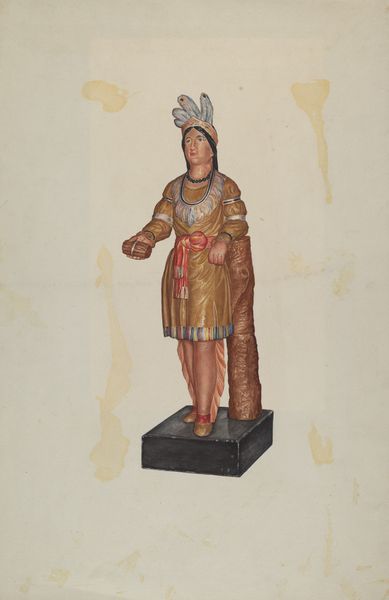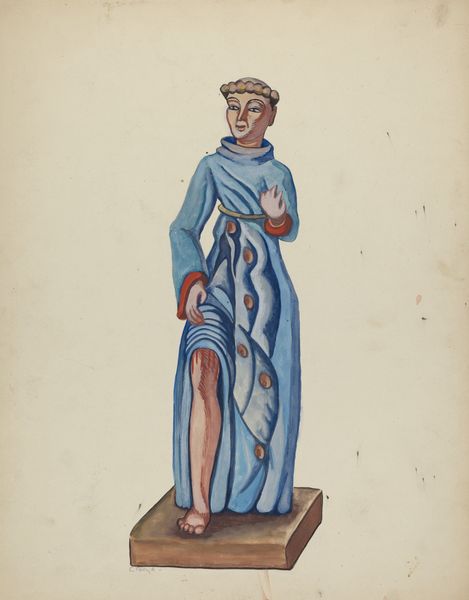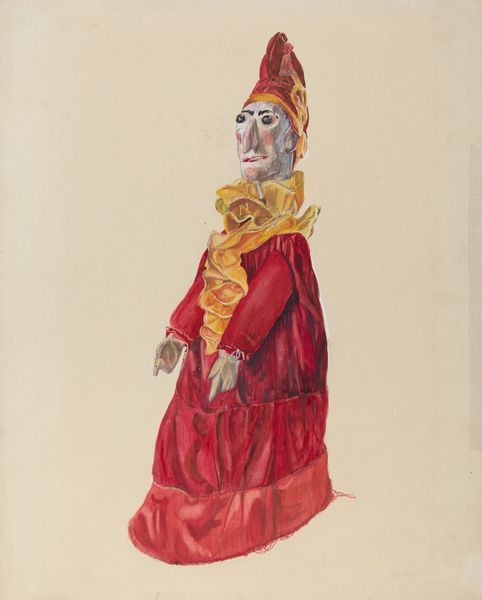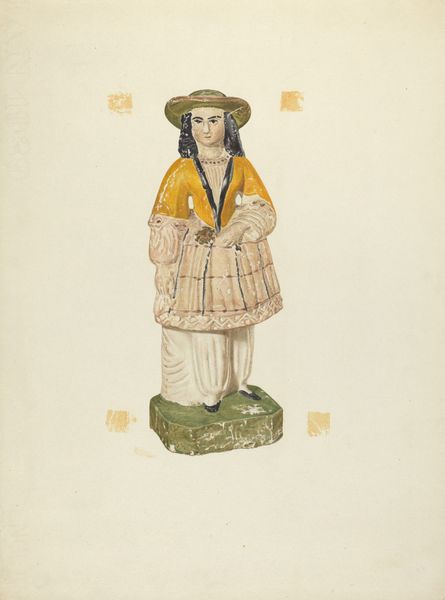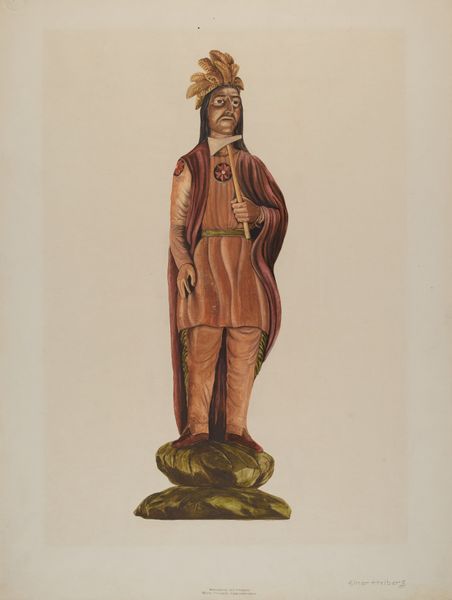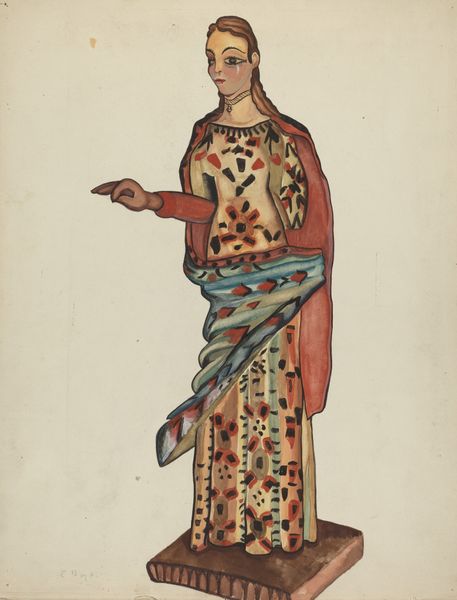
Plate 37: Saint Anthony: From Portfolio "Spanish Colonial Designs of New Mexico" 1935 - 1942
0:00
0:00
drawing, watercolor
#
portrait
#
drawing
#
caricature
#
figuration
#
watercolor
#
flat colour
#
folk-art
#
watercolour illustration
Dimensions: overall: 35.6 x 28 cm (14 x 11 in.)
Copyright: National Gallery of Art: CC0 1.0
Curator: Let's discuss Plate 37, a watercolor drawing entitled "Saint Anthony: From Portfolio 'Spanish Colonial Designs of New Mexico'," dating from between 1935 and 1942. What are your initial thoughts? Editor: Well, the first thing that strikes me is the base. It's such a contrast – this incredibly detailed, almost folk-art style, hand-painted box beneath this figure of Saint Anthony rendered in flatter colors. It really highlights the material process, the different artistic intentions colliding on the same plane. Curator: That contrast is telling. These "Spanish Colonial Designs" were often created under the Works Progress Administration, a federal program meant to document and, in some ways, preserve aspects of regional artistic traditions during the Depression. Consider how that shapes the image's purpose and reception. Editor: Exactly. This wasn't about pure artistic expression, but about documenting a very specific kind of labor, both the labor of creating the original carvings the artist is referencing, and the labor of creating this watercolor. Look how much detail is captured through thin, deliberate outlines and the overall feeling is decorative yet simple. Curator: It becomes about the political function of preserving cultural identity during times of national crisis and standardization. The subject matter too, Saint Anthony, a figure important in many cultures as the protector of the poor and helpless—the timing of depicting this in the New Deal Era, raises all sorts of questions on representation, doesn't it? Editor: Absolutely. And consider how watercolor was chosen, perhaps for accessibility or to emulate the pigment characteristics of a colonial carving. Even in this plate’s presumed intended audience, how much of that would have registered as directly contrasting with then-current fine art dogma? Curator: It also reminds us of the complex layers of artistic patronage—the initial creation of religious imagery during the colonial era versus the government's attempt to catalog folk art expressions centuries later. Both serve distinct power dynamics. Editor: I see your point, framing these choices highlights how artistic creation, both past and present, is intimately linked to systems of social and economic organization. The act of preservation becomes a value statement as well. Curator: Indeed. Thank you for giving new meaning to our understanding of the confluence of historical preservation, artistic intention, and artistic production in this New Mexico WPA plate. Editor: Thanks. Examining the textures and the artist's material choices helps to contextualize the broader social implications, as well as its original historical moment.
Comments
No comments
Be the first to comment and join the conversation on the ultimate creative platform.

